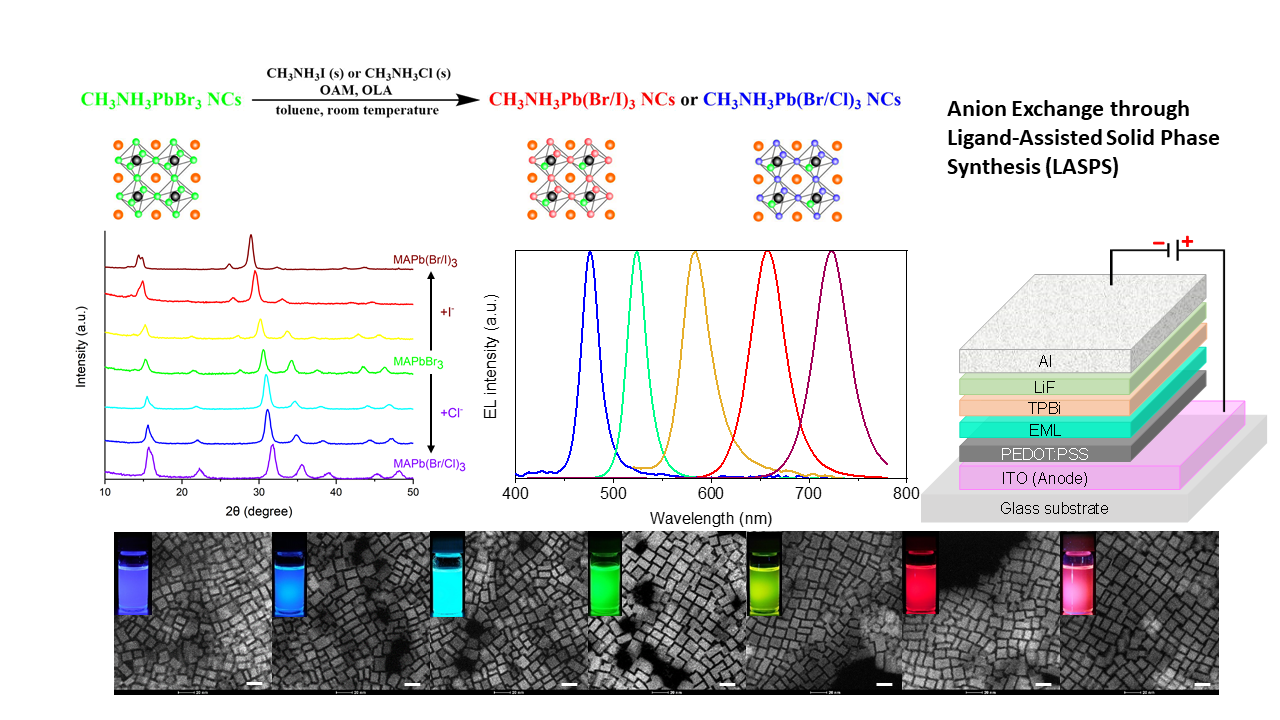Ligand-Assisted Solid Phase Synthesis of Mixed-Halide Perovskite Nanocrystals for Highly Electroluminescent Light-Emitting Diodes
Colloidal organic-inorganic hybrid perovskites (OIHPs) with the general structure ABX3 (A stands for methylammonium (MA) or formamidinium (FA), B stands for Pb or Sn, and X are halides (Cl, Br, I)) belong to an interesting class of semiconductor materials for optoelectronic applications, including solar cells, lasers, photodiodes, and light-emitting diodes (LEDs). [1-2] Great advantages over other competing semiconductor systems such as cadmium chalcogenides are the simple synthetic routes, high photoluminescence quantum yields (ηPL), and especially the color tunability over the whole visible spectra of these materials, which can be easily achieved by varying the halide composition of the OIHPs. In this work, we present a facile solid-state post-synthetic anion exchange method, ligand-assisted solid phase synthesis (LASPS), to prepare highly luminescent methylammonium lead halide (MAPbX3) nanocrystals (NCs), which exhibit a strong PL emission in the entire visible region between 415 and 724 nm with high ηPL up to 90%. We report partial substitution processes of the anions at the solid-liquid interface yielding halide mixtures of MAPb(Br/I)3 and MAPb(Br/Cl)3 NCs, respectively. Furthermore, we demonstrate LEDs using LASPS based OIHP NCs with the maximum external quantum efficiency (ηext) of 0.005% to 4.7% at 476 (blue) and 656 nm (red), respectively, whereas parent MAPbBr3 NCs showed an ηext of 3.5% at 524 nm.

[1] Brandon R. Sutherland, Edward H. Sargent, Nature Photonics, 2016, 10, 295-302.
[2] Zhi-Kuang Tan, Reza Saberi Moghaddam, May Ling Lai, Pablo Docampo, Ruben Higler, Felix Deschler, Michael Price, Aditya Sadhanala, Luis M. Pazos, Dan Credgington, Fabian Hanusch, Thomas Bein, Henry J. Snaith, Richard H. Friend, Nature Nanotechnology, 2014, 9, 687-692.